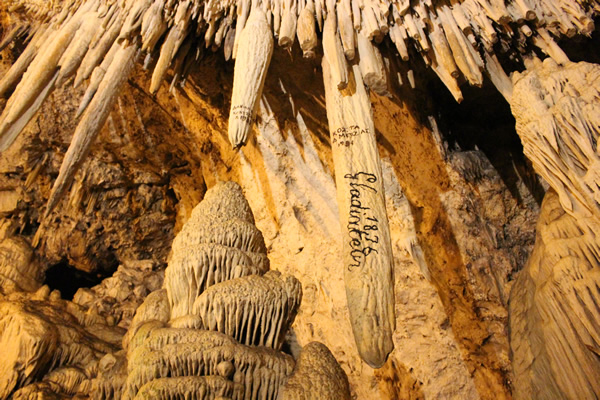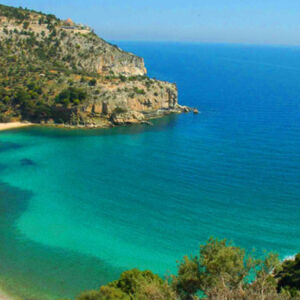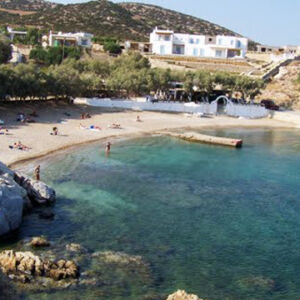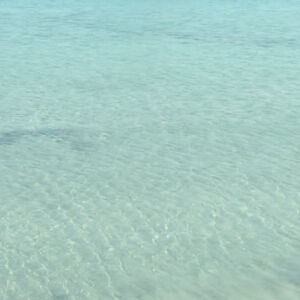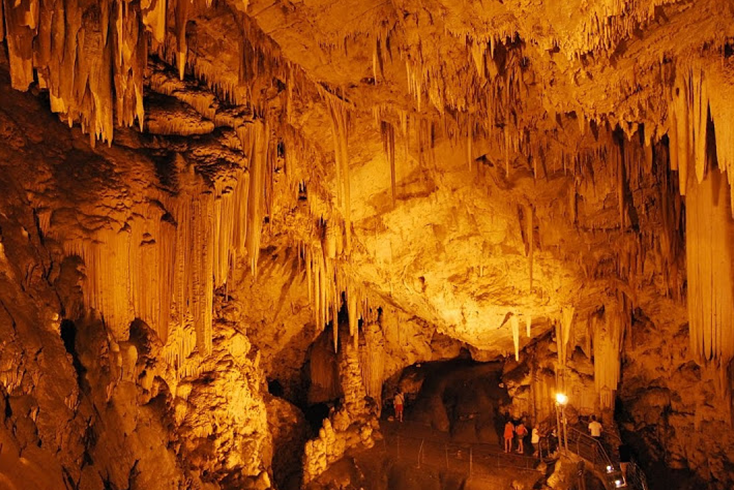
Antiparos Cave, also known as the Cave of Agios Ioannis, is located just 8 km from Antiparos town (Chora).
It’s the island’s top attraction—and a true natural wonder.
The Antiparos Cave is open daily from 10:00 AM to 4:00 PM, with the last entry at 3:30 PM.
(Last updated: May 2025)
THE CAVE WILL BE OPEN EVERY DAY UNTIL THE END OF OCTOBER
Antiparos Cave is the only vertical cave in Europe, plunging to a depth of around 85 meters. Inside, you’ll discover stunning stalactites and stalagmites—including the oldest stalactite in Europe, estimated to be 45 million years old. It’s truly one of Greece’s most magical natural wonders and an absolute must-see.
The view from the cave is just as impressive. Overlooking the Aegean Sea, you can take in Soros Beach, nearby coves, rugged cliffs, and even spot Paros island in the distance.
🕳️ Antiparos Cave – Visitor Information (2025 Season)
Antiparos Cave, the island’s top natural attraction, will be open daily through October 2025 from 10:00 to 16:00, with last admission at 15:30.
🎟 Admission Tickets
General admission: €6.00
(Includes entrance to the Historical and Folklore Museum of Antiparos)Children aged 6 to 12: €3.00 (50% discount)
Children under 6 years old: Free
You may use your Antiparos Cave ticket to also visit the Historical and Folklore Museum.
🧾 Winter & Group Visits
During the winter months, visits can be arranged through the Municipality of Antiparos.
For school visits, please contact KEDA at +30 22840 61640.
⚠️ Important Visitor Information
The descent into the cave includes approximately 411 steps. Please wear comfortable footwear.
Bring water—there is no shop near the cave, and the climb back up can be tiring.
The cave is not accessible to individuals with respiratory or heart conditions due to high humidity levels.
Smoking, flash photography, writing on walls, and damaging or removing stalactites/stalagmites are strictly prohibited.
🛠 Facilities & Accessibility
The cave was renovated in 2009, with:
A cement stairway (411 steps) and safety railings
Modern lighting
Surveillance cameras
A redesigned forecourt area
An audio tour is available in Greek and English.
Printed informational leaflets are available in seven languages: Greek, English, French, Italian, German, Swedish, and Russian (available at the entrance).
🚗 Getting There
A public bus from the Antiparos port runs hourly during the summer. (Check the posted timetable.)
The cave is accessible by car, motorcycle, or bicycle via a paved road that begins just left of the ferry dock at Antiparos port.
There is a large, spacious parking area at the cave.
You can also walk from the port to the cave, which takes about 1.5 hours.
📞 Contact
For additional information or arrangements, contact:
Phone: +30 22840 61640
Email: keda@antiparos.gr
Antiparos Cave – information and history
🕳️ Antiparos Cave – History, Structure & Highlights
The Antiparos Cave is one of the most remarkable natural monuments in Greece. Located 171 meters above sea level, the cave is large and multi-leveled, with an area of approximately 5,600 square meters.
Its maximum depth reaches 85 meters
It extends to a length of 89 meters
The widest point spans nearly 60 meters
Interior temperature stays around 15°C (59°F) in winter
✨ A Natural and Historical Wonder
The cave features spectacular stalactites and stalagmites, constantly reshaped in the eyes of each visitor’s imagination. The descent is safe and manageable via a 411-step cement staircase installed during the major renovation of the 2000s.
The Antiparos Cave is believed to have been used during the Neolithic period for shelter and later for the worship of the goddess Artemis. Evidence of its long human history is visible through inscriptions on its walls—left by visitors across the centuries.
Some of the notable historical figures said to have visited or left their mark include:
Alexander the Great
King Otto of Greece
Queen Amalia
Lord Byron
The marquis de Nointel (French ambassador to the Ottoman Empire), who in 1673 celebrated Christmas Mass here
Archilochus, the lyric poet from Paros, is believed to have also inscribed his name on the walls
🏛️ Interior Sections & Features
The cave is divided into:
The Antechamber
The Chamber of the Stone Waterfalls
The Chamber of the Cathedral
The Royal Chamber
At the cave’s entrance stands a massive stalagmite—called the “Huge Central Column”—which is estimated to be 45 million years old, making it the oldest stalagmite in Europe.
The Royal Chamber was named after a royal visit by King Otto and Queen Amalia. While modest in decoration, it remains a striking and symbolic part of the cave.
🕍 Chapels & Celebrations
At the entrance of the cave, two charming chapels have been built:
Agios Ioannis (Ai Yiannis) Spiliotis
Zoodohos Pigi
Every year, on the 7th and 8th of May, the chapel of Ai Yiannis Spiliotis hosts a traditional festival with local food and drink.
🛠 Renovation & Preservation
During the German occupation, parts of the cave suffered damage. However, in the late 2000s, a full renovation project was undertaken with European Union funding, which included:
The construction of cement steps with safety railings
The installation of modern lighting
Surveillance cameras and loudspeakers for visitor guidance
General improvements to the surrounding visitor facilities
Today, the Antiparos Cave is a fascinating blend of natural beauty, ancient history, and modern accessibility—a must-see site for anyone visiting the island.
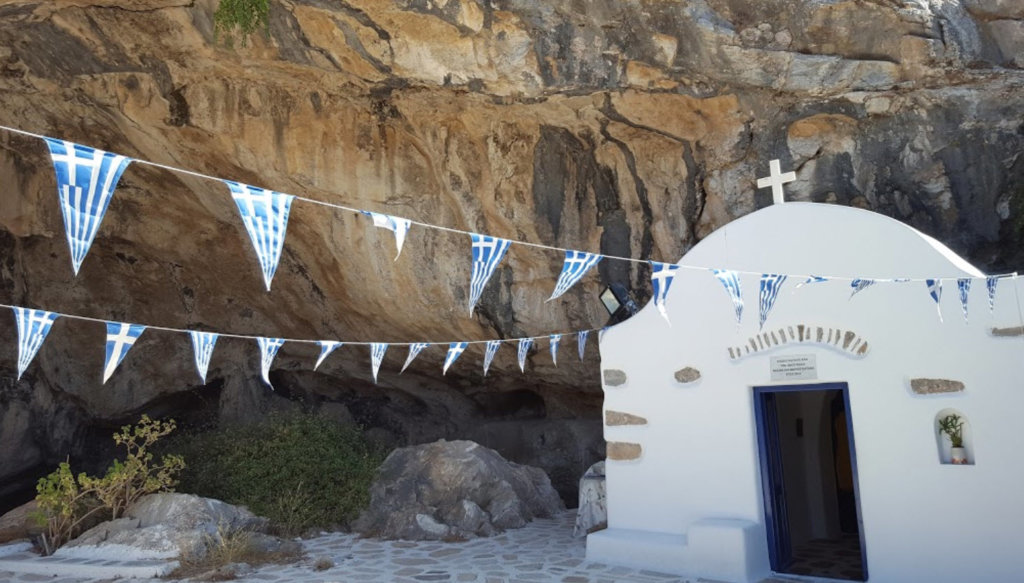
Διαβάστε αυτή τη σελίδα στα: 

